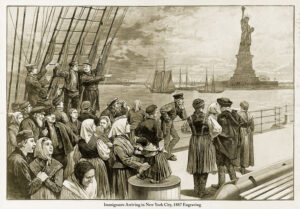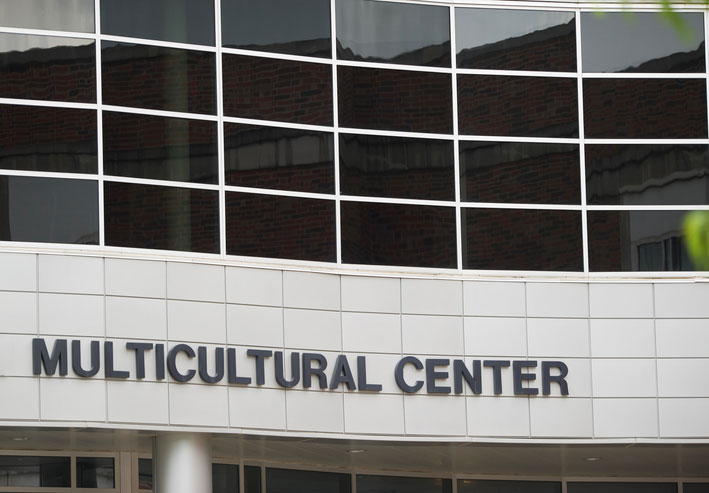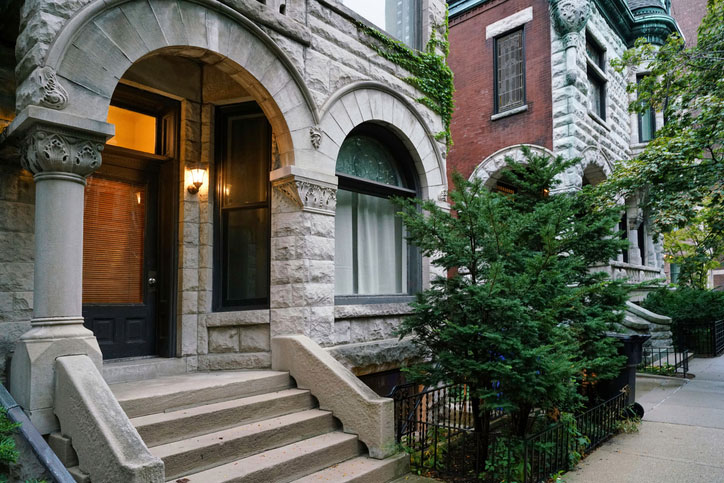Written by Scott Wilson
New York has always been a city defined by neighborhoods. Each of the Five Boroughs has a character. When you get right down to it, every block in every one of those boroughs is a community to itself. Even if it isn’t a city known for neighborly friendliness, most folks know that someone on the block has their back.
For much of the history of the city, and many other cities in New York State, that support came from settlement houses. Early efforts to provide centralized locations for services ranging from laundry to food to education to cultural enrichment, settlement houses were a perfect merger of the individual and social care that has come to characterize social work as a profession.
They were called settlement houses because they were initially aimed at the large masses of immigrants who needed assistance settling into the social and economic systems of the new country. But the concept quickly took on a life of its own… one that has continued with New York’s neighborhood houses today.
An Early Social Services Innovation in the City That Defines the History of American Social Work
 While Chicago’s Hull House often gets all the limelight in American neighborhood house history, the first settlement house experiments happened in New York. University Settlement was opened on the Lower East Side in 1886 by Stanton Coit, an American minister who had toured the very first settlement house, Toynbee Hall, in London. Others soon followed, nearly 20 by 1908 in New York City alone.
While Chicago’s Hull House often gets all the limelight in American neighborhood house history, the first settlement house experiments happened in New York. University Settlement was opened on the Lower East Side in 1886 by Stanton Coit, an American minister who had toured the very first settlement house, Toynbee Hall, in London. Others soon followed, nearly 20 by 1908 in New York City alone.
The early settlement houses were an experiment in social services that quickly ballooned to fill almost every need available. They were literally houses, with charity workers making their home there… but they were also schools, with children arriving each morning for daycare and kindergarten… They were health clinics, with both emergency and wellness services on offer… they were sports centers, with after-school events to help occupy kids from the neighborhood and keep them out of trouble.
Night classes in English might be available for adults, along with festivals and dances that offered an alternative to saloons or seedy dance halls.
Just as importantly, they served as centers for activism and marshaling support for larger social changes. New York became a centerpiece of American reformists in no small part because settlement houses offered a voice to oppressed workers and starving communities.
Through it all, the social workers were there side-by-side with neighborhood residents. They shared their pains, and their victories. And it’s still something that social workers do today.
The Same Services With a New Name Characterize Neighborhood Centers in New York Today

The original founders likely wouldn’t recognize the modern community center or neighborhood house as the clear descendant of those old settlement houses.
Government policy became the preferred solution for social workers as the Great Depression overwhelmed small scale neighborhood charity efforts like the settlement house. Yet despite the New Deal and many reforms since, neighborhood houses have persisted. Government is big and powerful, but also distant and impersonal. It’s easy to get ground up in the cogs, no matter how well-meaning the policies.
Not every neighborhood house has successfully adapted to changing times. In some cases, notably that of Hull House itself, they came to rely excessively on government funding. Without the sort of macro lobbying and fundraising work that the original founders excelled at, when the funding dried up, so did many neighborhood houses.
Hull House’s last vestige, the Hull House Foundation, evaporated in 2012.
But Coit’s University Settlement is still active and breathing resource in New York today. Transformation is positive. The neighborhood centers of today have adapted to ways that society itself has transformed since the early 1900s and fulfill the same needs and more for disadvantaged populations.
In fact, the whole neighborhood house concept proved to be such a good idea that New York has continued to start up new ones as well as preserve the old. BronxWorks was established in 1973 and Queens Community House was founded in 1975.
There are still 37 neighborhood houses scattered through New York. Their enduring presence is both a testament to and a lesson for social workers.
Why Neighborhood Houses Work so Well in NYC Communities

Neighborhood houses emerged at a point in the history of charitable work where there was a renewed interest in the humanity of those needing assistance. Reformers sought to call attention to the conditions in which immigrants and the indigent lived. One way to do that was to live among them.
Neighborhood houses were an early shout out to the strength of diversity in social work.
The idea was that the presence and example of upper-class, well-educated professionals would set an example and serve as a resource to the community. To some extent, that happened. What was less expected but perhaps more important was that those original social workers also learned more directly and fully about life at the bottom of the socioeconomic spectrum.
That built a better understanding of root causes and broke down assumptions about the causes of inequity and injustice. That allowed social workers to develop a better cross-cultural understanding and break down some of the divides between them and the people they were attempting to help. It offered a clearer view of problems that weren’t necessarily obvious during short visits.
It’s no coincidence that the shift away from the popular view of poverty as moral failing happened just as neighborhood houses were becoming common.
Equally important was breaking down the service provider/client dynamic. Assistance from a neighbor is always more welcome than an industrialized bureaucracy dole. Anyone with experience dealing with ACS (Administration for Children’s Services) or NYCHA (New York City Housing Authority) can point to that difference immediately.
It also made assistance easier for people to reach and faster to deliver. In an era where most transportation was still on foot and phones were rare, it made sense to be able to run down the block for a midwife rather than going to a whole other neighborhood. It made residents far more likely to take advantage of the services and opportunities as well, since it was easy to drop in.
Returning to Fundamentals Can Help Today’s Neighborhood Houses Stay Solvent
That points to the role of neighborhood houses, then and now, as a place for association and community. For individuals in a modern metropolis like New York City with high rents, it’s not uncommon to find families of 10 or more crowded into spaces meant for two. A neutral community space can provide a welcome respite from the claustrophobia of that situation.
That kind of connection represents stability in communities that are otherwise racked with stress and displacement. Gentrification, the drug epidemic, the pandemic, and discrimination have all fueled difficulties in New York communities in the past years. Having an institution that has stood in place to represent their rights and interests for more than a hundred years can have a powerful positive impact in such places.
Social workers with a firm grasp of neighborhood dynamics, of individual personalities, of systemic issues and specific needs, continue to have the clearest vision of effective solutions. Neighborhood houses serve as their base, and their lever for shifting solutions into place for community members that need them.

